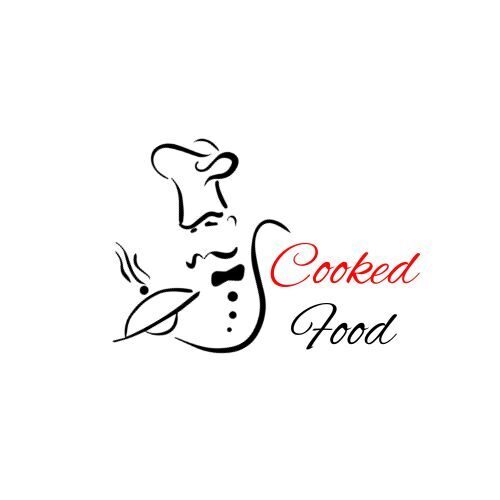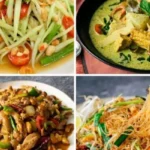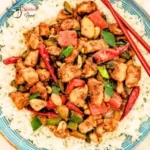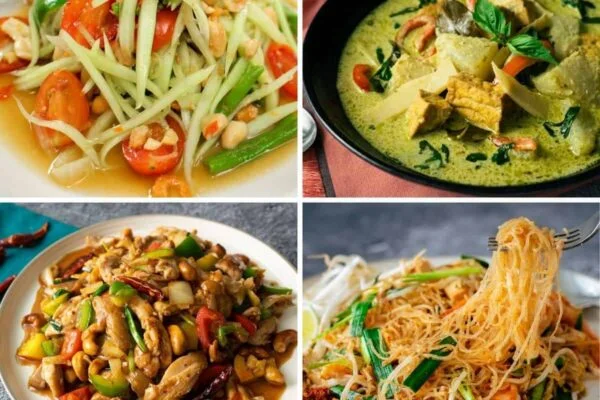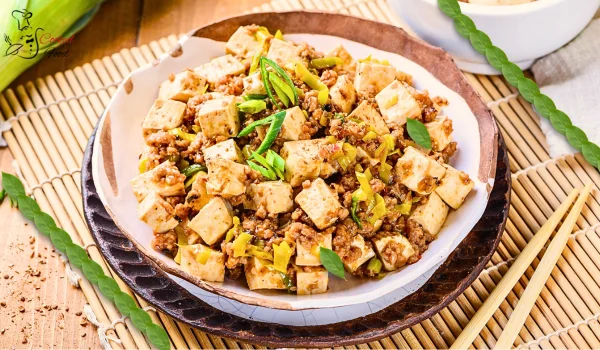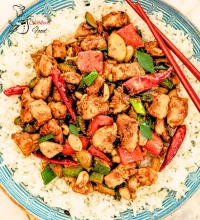Stir-Fried Symphony of Flavors and Noodles
A beloved meal of stir-fried noodles, vegetables, and usually meat, Chow Mein is now a staple item at Chinese restaurants all around. Globally, it is a culinary favourite because of its adaptability, cost, and pleasing mix of tastes and textures. But Chow Mein’s narrative is about culinary adaptation, cultural interchange, and regional variances, not only about a straightforward recipe. Examining the components that have made Chow Mein such a popular and enduring meal, this essay explores its interesting history, varied preparations, cooking techniques, and cultural relevance.
Northern China’s Origins are In A staple Food Staple
Chow Mein originated in northern China, where for millennia wheat noodles have been a mainstay of cuisine. Mandarin Chinese literally translates the name “Chow Mein” (炒面, chūomiàn) as “stir-fried noodles”. Although the precise beginnings are unknown, stir-frying noodles evolved as a means of fast and effective preparation of a satisfying meal using easily available components.
Wheat-based foods including several kinds of noodles abound in northern Chinese cuisine. Noodles are ideal for stir-frying, a method in which items are quickly and uniformly cooked while generating a desired texture by rapidly tossing and swirling in a heated wok with oil. The first versions of Chow Mein most certainly originated this way.
Cantonese Impact & World Distribution: A Culinary Diaspora
Cantonese cuisine is mostly responsible for the Chow Mein variant Western palates most know. Renowned for their creative and flexible style of cooking, Cantonese chefs were instrumental in bringing the meal front and front both inside China and beyond. Waves of Chinese immigrants, most of them from Guangdong province (where Cantonese is spoken), moved to North America, Europe, and Southeast Asia in late 19th and early 20th century. Many times opening restaurants, these immigrants brought Cantonese cuisine—including Chow Mein—to fresh audiences.
Chow Mein changed to fit local preferences and available ingredients as it travelled over boundaries. This process of culinary adaptation has produced a wide spectrum of Chow Mein variants all around, each reflecting the particular cooking customs of the area.
Varieties of Noodles: A Basis of Diversity
The area and particular recipe will affect the kind of noodles Chow Mein uses. Among the typical varieties are:
- Westernised Chow Mein generally uses egg noodles, which are the most often occurring kind of noodles. Their yellow hue and somewhat chewy texture come from their composition of eggs and wheat flour.
- Commonly utilised in more real Chinese cuisine are fresh or dried wheat noodles. Depending on the particular type, they can have a range of textures, be thin or thick, be flat or round.
- Cantonese Wonton Noodles: Often seen in Cantonese-style Chow Mein, these thin, yellow noodles are prized for their bouncy quality.
Important Variations and Ingredients: A Range of Flavors
Although stir-fried noodles are the main component of Chow Mein, the other components can vary greatly and produce a broad spectrum of flavours:
Common vegetables seen in Chow Mein are cabbage, onions, celery, carrots, bell peppers, bean sprouts, and scallions. Availability and personal inclination will affect the particular vegetables utilised.
Chow Mein often features chicken, pork, beef, and prawns among meats. Usually marinated before stir-fried, the meat is softened and enhanced in taste.
Usually comprising soy sauce, oyster sauce (optional), sesame oil, and occasionally extra ingredients such sugar, vinegar, or white pepper, Chow Mein’s sauce is The predominant taste element in the meal comes from the sauce, which also varies in thickness and strength.
Two principal styles: Crispy vs. Steamed
Chow Mein has two primary forms:
Soft Chow Mein, sometimes called steamed Chow Mein: The noodles in this form remain soft and tender even while they are stir-fried till cooked thoroughly. Usually poured just at the end of cooking, the sauce coats the vegetables and noodles.
Pan-fried noodles, sometimes called Crispy Chow Mein, Often shaped like a nest, this method pan- fries the noodles till crispy and golden brown. The sauce is then drizzled over the crispy noodles, softening some but leaving others crispy.
Stir-frying: The Art Working Hei and Technique
A real Chow Mein requires a stir-frying method of cooking. This entails fast tossing and stirring the components in a hot work with oil. Considered a necessary component of real stir-fried cuisine, the strong heat and continuous movement provide a distinctive smokey taste known as “wok hei” (鑊氣).
Important elements of stir-frying for Chow Mein consist in:
- Before adding any components, the work should be preheated until rather hot.
- Stir-frying is advised with a high-smoke-point oil like vegetable or peanut oil.
- Quick cooking ensures that the ingredients are cooked fast and effectively, so preventing them from getting overly overdone or soggy.
- The components should be regularly mixed and turned to guarantee even cooking and stop burning.
Cultural Value and Worldwide Adaptations a Melting Pot in Cooking
Originally tailored to fit local tastes all around, Chow Mein has evolved to represent Chinese-American cuisine. It might be presented in some areas alongside other varieties of noodles, sauces, or veggies. different areas may mix it with different cooking styles to produce fusion cuisine.
Chow Mein’s flexibility has helped dish to remain rather popular. For people of all ages and backgrounds, it is a flexible and fulfilling dinner since it can be readily tailored to fit personal tastes.
Modern Interpretations and Culinary Creatives: An Ongoing Development
Modern home cooks and chefs are experimenting with Chow Mein adding fresh ingredients, methods, and flavour combinations. While some varieties investigate more modern techniques, such employing different kinds of noodles, sauces, or proteins, others concentrate on using premium ingredients and traditional cooking techniques. Using tofu, tempeh, or another plant-based protein, vegetarian and vegan versions have also grown rather popular.
Final Thought: An Ancient Classic of Noodle Harmony
The ongoing appeal of Chow Mein is evidence of its adaptability, economy, and pleasing mix of flavours and textures. From its modest beginnings in northern China to its present global gastronomic reputation, this meal never fails to please and inspire. It captures the vitality of Chinese food, its capacity to adapt and combine inspirations while keeping its basic character. Chow Mein is a timeless staple whether eaten in a busy Chinese restaurant, ordered as handy takeaway or lovingly made in a home kitchen. It is a fantastic illustration of how deftly paired basic materials may produce a very remarkable dining experience. Its narrative is a wonderful fusion of history, culture, and gastronomic creativity, evidence of the ability of food to cross boundaries and unite people via common gastronomic events. For decades to come, the stir-fried symphony of noodles, vegetables, and flavours will surely keep palates all around delighted and satisfied.
